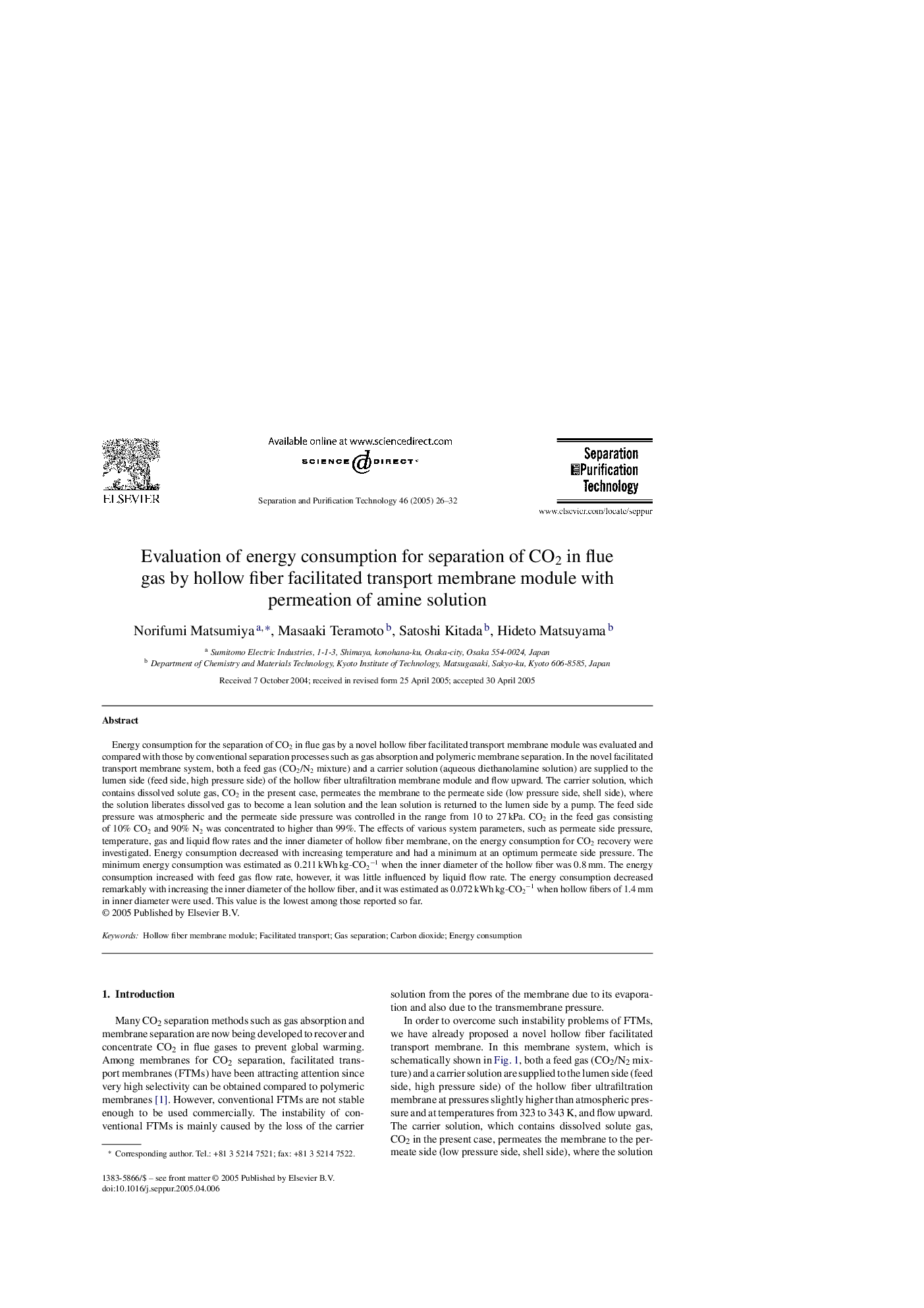| Article ID | Journal | Published Year | Pages | File Type |
|---|---|---|---|---|
| 9689956 | Separation and Purification Technology | 2005 | 7 Pages |
Abstract
Energy consumption for the separation of CO2 in flue gas by a novel hollow fiber facilitated transport membrane module was evaluated and compared with those by conventional separation processes such as gas absorption and polymeric membrane separation. In the novel facilitated transport membrane system, both a feed gas (CO2/N2 mixture) and a carrier solution (aqueous diethanolamine solution) are supplied to the lumen side (feed side, high pressure side) of the hollow fiber ultrafiltration membrane module and flow upward. The carrier solution, which contains dissolved solute gas, CO2 in the present case, permeates the membrane to the permeate side (low pressure side, shell side), where the solution liberates dissolved gas to become a lean solution and the lean solution is returned to the lumen side by a pump. The feed side pressure was atmospheric and the permeate side pressure was controlled in the range from 10 to 27 kPa. CO2 in the feed gas consisting of 10% CO2 and 90% N2 was concentrated to higher than 99%. The effects of various system parameters, such as permeate side pressure, temperature, gas and liquid flow rates and the inner diameter of hollow fiber membrane, on the energy consumption for CO2 recovery were investigated. Energy consumption decreased with increasing temperature and had a minimum at an optimum permeate side pressure. The minimum energy consumption was estimated as 0.211 kWh kg-CO2â1 when the inner diameter of the hollow fiber was 0.8 mm. The energy consumption increased with feed gas flow rate, however, it was little influenced by liquid flow rate. The energy consumption decreased remarkably with increasing the inner diameter of the hollow fiber, and it was estimated as 0.072 kWh kg-CO2â1 when hollow fibers of 1.4 mm in inner diameter were used. This value is the lowest among those reported so far.
Keywords
Related Topics
Physical Sciences and Engineering
Chemical Engineering
Filtration and Separation
Authors
Norifumi Matsumiya, Masaaki Teramoto, Satoshi Kitada, Hideto Matsuyama,
